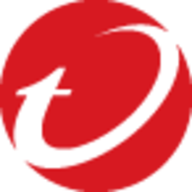


Trend Vision One - Cloud Security and Sweet Security are competing in the cloud security domain. Sweet Security appears to have an advantage due to its advanced features and customization options, while Trend Vision One is recognized for its favorable pricing and comprehensive support.
Features: Trend Vision One - Cloud Security provides extensive threat detection, seamless integration with existing systems, and a focus on both known and emerging threats. Sweet Security offers proactive threat management, customization options, and a high level of flexibility catering to bespoke security needs.
Ease of Deployment and Customer Service: Trend Vision One features a straightforward deployment process combined with robust customer support, providing a quick solution for businesses. Sweet Security, while involving a more complex setup, offers personalized customer support and custom solution capabilities for specialized user needs.
Pricing and ROI: Trend Vision One - Cloud Security is noted for its competitive setup cost and attractive ROI for cost-sensitive organizations. Sweet Security, though initially more expensive, delivers significant ROI through its advanced features and customization abilities, justifying the higher cost for users seeking detailed security operations.
| Product | Market Share (%) |
|---|---|
| SentinelOne Singularity Cloud Security | 4.7% |
| Trend Vision One - Cloud Security | 1.6% |
| Sweet Security | 1.0% |
| Other | 92.7% |



| Company Size | Count |
|---|---|
| Small Business | 47 |
| Midsize Enterprise | 20 |
| Large Enterprise | 52 |
| Company Size | Count |
|---|---|
| Small Business | 11 |
| Midsize Enterprise | 6 |
| Large Enterprise | 7 |
SentinelOne Singularity Cloud Security offers a streamlined approach to cloud security with intuitive operation and strong integration capabilities for heightened threat detection and remediation efficiency.
Singularity Cloud Security stands out for its real-time detection and response, effectively minimizing detection and remediation timelines. Its automated remediation integrates smoothly with third-party tools enhancing operational efficiency. The comprehensive console ensures visibility and support for forensic investigations. Seamless platform integration and robust support for innovation are notable advantages. Areas for development include improved search functionality, affordability, better firewall capabilities for remote users, stable agents, comprehensive reporting, and efficient third-party integrations. Clarity in the interface, responsive support, and real-time alerting need enhancement, with a call for more automation and customization. Better scalability and cost-effective integration without compromising capabilities are desired.
What are SentinelOne Singularity Cloud Security's standout features?SentinelOne Singularity Cloud Security is deployed in industries needing robust cloud security posture management, endpoint protection, and threat hunting. Utilized frequently across AWS and Azure, it assists in monitoring, threat detection, and maintaining compliance in diverse environments while providing real-time alerts and recommendations for proactive threat management.
Sweet Security offers a robust cybersecurity solution designed to safeguard sensitive data with advanced monitoring features, enhancing organization-wide security protocols.
The comprehensive features of Sweet Security include real-time threat intelligence, automated incident response, and seamless integration with existing IT infrastructures. Engineered for flexibility and scalability, it effectively adapts to evolving cybersecurity landscapes, delivering actionable insights for proactive security management.
What are the key features of Sweet Security?
What benefits can users expect?
Sweet Security is implemented across industries such as finance and healthcare to guard sensitive information and comply with stringent regulations. Its adaptability allows customization to meet specific industry standards, addressing unique security challenges while maintaining high levels of protection.
Trend Vision One- Cloud Security Security provides comprehensive cloud security, threat protection, and compliance monitoring. Users commend its advanced features, ease of use, and strong performance in keeping digital assets safe. The platform improves efficiency and productivity for organizations while offering excellent customer support.
We monitor all Cloud-Native Application Protection Platforms (CNAPP) reviews to prevent fraudulent reviews and keep review quality high. We do not post reviews by company employees or direct competitors. We validate each review for authenticity via cross-reference with LinkedIn, and personal follow-up with the reviewer when necessary.